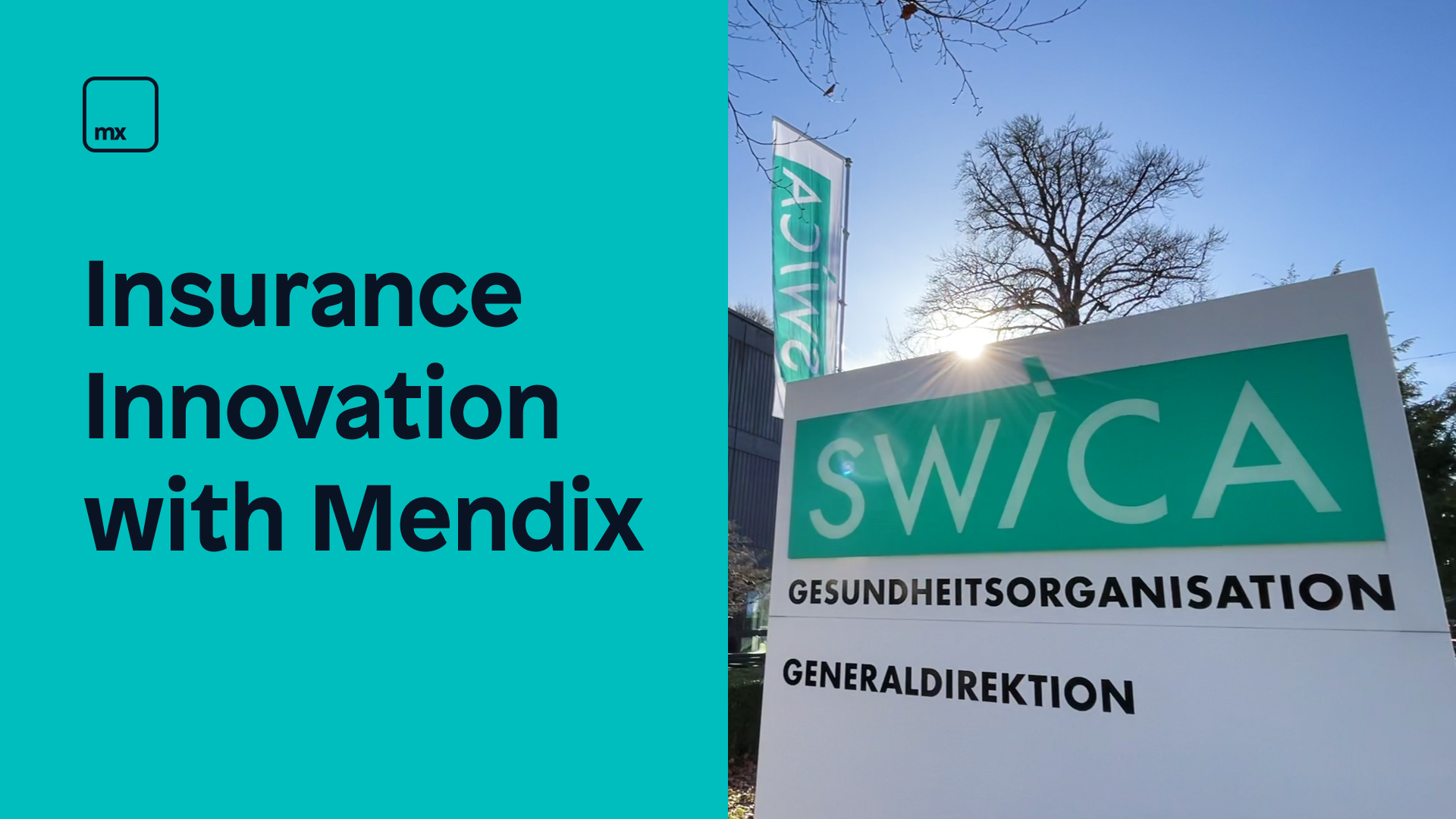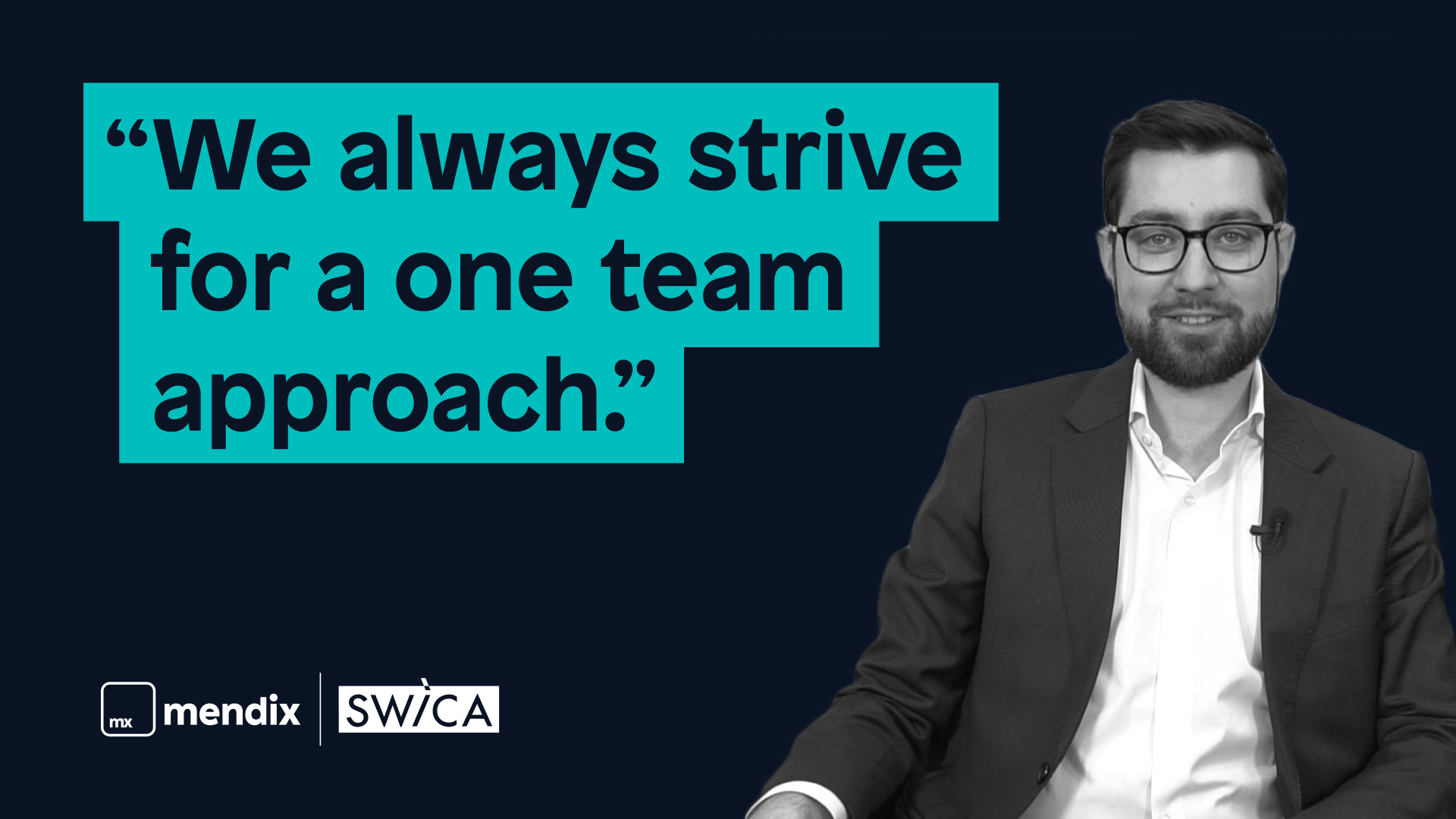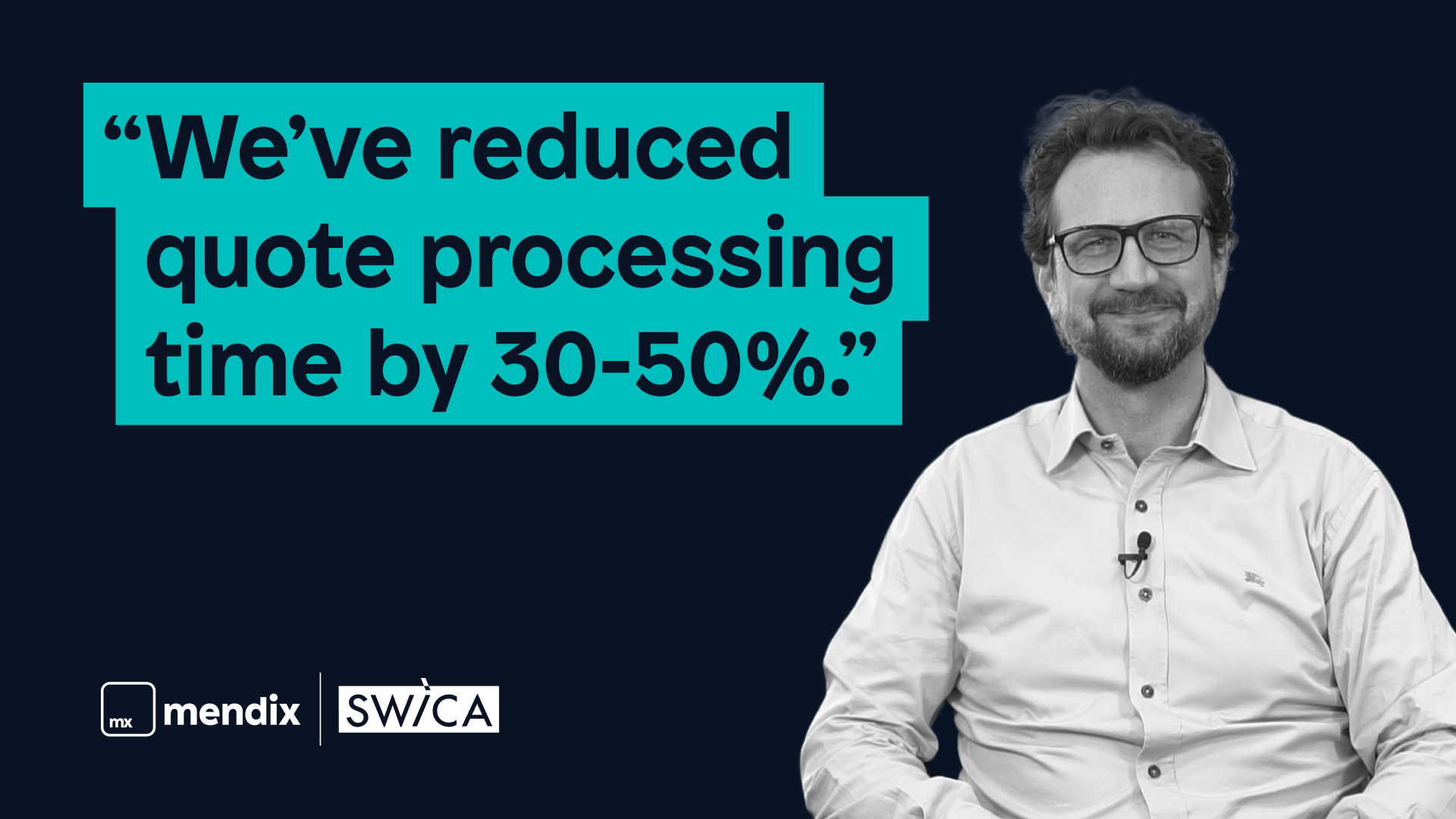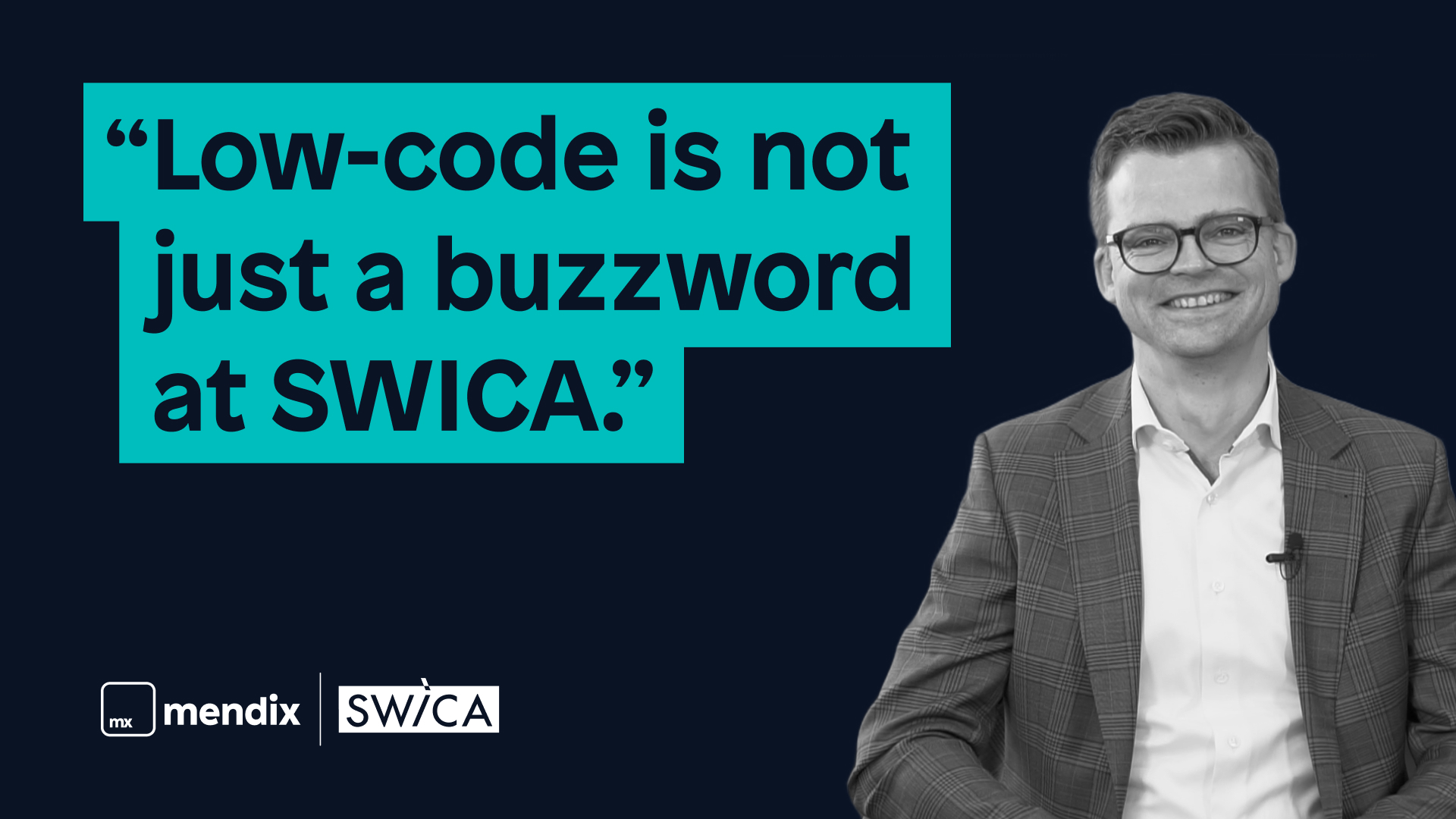Digitizing Insurance Quote Generation to Deliver on Transformation

The insurance industry is historically risk-averse, opting for consistency and tradition. However, their customers are increasingly becoming digital natives. This trend, combined with the impact of the COVID pandemic, has put insurers under immense pressure to serve their policyholders digitally and more quickly.
One of the many organizations responding to this pressure is SWICA Health Organisation, a Swiss health insurance provider serving over 1.6 million individuals and 30,000 corporate clients.
SWICA takes pride in having ‘Switzerland’s happiest customers,’ and in recent years has put an emphasis on digital transformation to defend this position and better support their employees.
SWICA generates over 12,000 quotes each year for their corporate clients. Historically this process was conducted through a legacy system and manual, Excel-based work, which slowed customer response time and impacted employee satisfaction.
In 2020, SWICA adopted the Mendix low-code development platform and enlisted an expert implementation partner, Zühlke, to transform the process into a modern, digital solution called Offerta.
Leading with Flexibility and Agility
Fabian Ringwald joined SWICA as CIO during the height of COVID-19 in 2020, steering the company’s IT group through a period of massive disruption.
“Over the last couple of years, the expectations of our users have changed,” Ringwald said. “We are evolving to have a holistic view of our processes. In the past, lots of paper sheets were flowing through the organization.”
One of those processes was generating a quote, or offer, for thousands of corporate clients. “In the past, making offers for our corporate customers was very complicated. There are several steps in the process, and without a single tool we would do some things in Excel, then some things in another tool, and then put the steps together manually,” said Andreas Koller, SWICA head of product management and underwriting.
In addition to being time-consuming, managing the flow of information and calculations across several systems presented a possibility for human error, and thus risks in compliance and tracking.
The SWICA IT landscape is built around a core system, Syrius, which houses customer data and offers a great deal of back-end automation but is challenging to adapt to new use cases and user needs. When Ringwald’s group was approached to redefine the quotation process, they knew that a traditional code approach would be costly and lengthy, so the team began to evaluate other options.
“I first heard of Mendix a few years back during an event, and I was amazed at the ease of development it presented. It took a while until I realized that we had a use case where Mendix might come in handy,” Ringwald recalled. “We looked at other platforms and approaches, first evaluating what it would take to start from scratch and follow a classic development approach. We also looked at other low-code platforms.”
Several organizations responded to SWICA’s request for proposals, one of which was Zühlke, a global innovation provider with expertise in business consulting and application development.
“We see a lot of challenges in the insurance industry such as high margin pressure, a shortage of talent, and a need to renew a lot of legacy system,” said Silvan Stich, head of low-code at Zühlke. “These are all points we can tackle with the speed and improved collaboration of a low-code platform like Mendix.”
Ultimately through their evaluation, SWICA selected the Zühlke team and Mendix platform to deliver their new quotation application — Offerta.
Structuring First App Success
Adopting a new enterprise technology is more than just purchasing a platform; it’s an exercise in change management. Throughout the development of Offerta, the SWICA team saw that a holistic approach to partnership, process improvement, and collaboration was important for their initial and long-term success.
As Offerta was SWICA’s first low-code project, and one that was highly complex, having the support of an expert implementation partner was critical in accelerating delivery and establishing best practices within their new way of working.
Developing in Mendix forced a culture shift in business collaboration and IT delivery at SWICA. Historically, the IT organization was described as a “demand and deliver” unit. With Mendix, the team could place the customer experience and impact front and center, as the business could frequently see their inputs and feedback reflected in the application throughout the development process.
“One big difference when we work in a low-code environment compared to traditional approaches is the speed of getting new talent integrated into the project,” said Ringwald. “Not only from a technical perspective, where a low-code developer can jumpstart much faster, but also on the business side.”
“When we collaborate with customers on a project, we strive for a one team approach,” said Stich. “You shouldn’t be able to distinguish whether a person comes from a client or our team as the partner because they work so closely together. That is also key to successfully working Agile — making sure that everyone is striving for the same goal.”
Ringwald saw that this side-by-side co-development empowered the blended team to swap business and technical insights with one another seamlessly. Looking at quote generation through a low-code lens also pushed the SWICA team to reevaluate their process as a whole and make optimizations before it was translated into a new solution.

“We had to learn as a company, and with our partner, how low-code is different from a classic software engineering project. Mendix comes with the ability to digitally transform processes that are on a certain maturity level, but what we learned is that our quotation process wasn’t that perfect,” Ringwald recalled. “We had a few functionalities in the old process that were conducted through large Excel calculations and weren’t optimal to integrate into a low-code environment.
“In the end we were quite happy because this process helped us to understand processes and ideas that fit best with a low-code approach, and that will help us to achieve our process transformation faster and more efficiently going forward,” he added.
Process Automation Improves Outcomes
Digitizing the quote generation process in Offerta began in the winter of 2020. An MVP was delivered by the summer of 2021, expanded with new capabilities, and then fully replaced the legacy quotation process by the 2022 season.
SWICA employees now go to one destination — Offerta — to start the process of generating the offer from start to finish, which includes:
- Leveraging guided onboarding on using the application, with an intuitive step-by-step process for employees.
- Making a premium calculation, which is fully integrated and standardized in the application.
- Applying market discounts, reflecting special pricing that salespeople may be able to offer.
- Following an approval workflow with a fully traceable log of each step and participant in the process.
- Integrating with SWICA’s CRM and Syrius system, to dynamically track offer and customer information and reduce the need for duplicate data entry across systems.
- Duplicating offers with the click of a button so employees can copy a previous offer and then modify it as needed instead of starting from scratch.

Historically, completing quote or offer generation in multiple systems inevitably resulted in lost or incomplete paper trails. “The Offerta system documents every step of the process and tracks which employee has done each step. Now, we have a fully documented and fully transparent system which improves our compliance,” Koller added.
Having a fully digitized and intuitive user experience also increases the efficiency of onboarding, dramatically reducing training time.
“We’ve iterated on Offerta over the last two and a half years, and it is still ongoing,” said Stich. “There are a lot of different functionalities. For example, compared to the time before Offerta, employees now have a guided process that walks them through creating an offer, instead of having to learn and switch between tools like Excel and Word throughout the process.”
“There is also an approval workflow built in so that you can ensure compliance, as everything is completely auditable. Additionally, the calculation of a premium is now fully integrated into Offerta and is validated through a series of test cases,” he added.
For SWICA, improving the quote generation process isn’t just an exercise in better serving their customers. It is driven by the desire to make their employees happier by expanding their potential to contribute meaningful work.

“Our employees are working with the tool every day,” said Koller. “Offerta is an important part of their daily work, and with this new system they have a better user experience. We have several quality checks to reduce errors, it looks modern, it’s guided, and their work is done even faster.”
In terms of how much faster, SWICA says that Offerta has reduced their quote generation process for corporate customers by a staggering 30–50%.
“Locking our talent in a paper-based, manual, and repetitive process is not the best use of our colleagues,” said Ringwald.
Insurance Innovation Delivered with Low-Code
The process of delivering Offerta with Mendix and Zühlke offered several learnings for the SWICA team as they carry out future transformation efforts with low-code.
Ringwald offers up his reflections as a CIO throughout the process:
- Pick the right partner who can work with your team in an integrated capacity and share their low-code knowledge and expertise.
- Be mindful of the first application you create. Ringwald says you can think about it in two ways: either choose the more simple, low-hanging fruit to prove out immediate value, or start with something more complex. If you do take the latter route, set the expectation that there may be a learning curve, but your team will walk away with an in-depth understanding of the platform.
- Don’t just aim to lift and shift a legacy process into a low-code environment. Ask whether the process is standardized or being carried out in the right way before you invest the time and resources replicating it in a new system.
“The big question when you look at transforming a process like this is ‘Are we differentiating ourselves in the market?’ We are not necessarily changing our product setup or our offering to customers. What does help us in our market presentation is that we have a more efficient process that helps us to interact faster and get results to our clients faster than before,” Ringwald said.
“We’re in the lucky position of having the happiest customers in the market, and the quality of service that we improve with Offerta will certainly help us to stay there and improve even further,” he continued.
The SWICA and Zühlke teams are already looking ahead to what’s next after Offerta. “We’re evaluating further projects, such as the process that immediately follows generating an offer for a client. Even outside of the quotation process, we are looking at anything in the organization that is still too paper-based or non-standardized to figure out where we can free up our colleagues from repetitive work that can be done by a low-code application,” he added.
“And of course, it helps me to retain talent as well. Who wouldn’t want to work in an environment where you can use cutting-edge technology to fulfill your customer’s needs?”